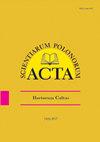水杨酸和高岭土对调亏灌溉条件下橄榄产量、生理特性及脂肪酸组成的影响
IF 0.7
4区 农林科学
Q4 HORTICULTURE
引用次数: 2
摘要
研究了水杨酸(SA)和高岭土(KL)分别和同时对两个橄榄品种(Zard和Roghani)产量、生理特性和脂肪酸组成的影响。结果表明,与全灌溉(100%ETc)相比,亏灌,特别是50%的作物蒸散(ETc),增加了两个橄榄品种的MDA、脯氨酸积累和抗氧化酶活性,但降低了叶绿素含量和产量。与对照相比,施用SA和KL通过提高叶绿素含量和抗氧化活性减轻了缺水对植物的有害影响,从而提高了产量。相反,低灌溉增加了一些脂肪酸,如棕榈油酸、硬脂酸、花生酸,同时减少了不饱和/饱和脂肪酸。此外,与对照组相比,同时施用SA和KL增加了不饱和/饱和脂肪酸和提取橄榄油的质量。总的来说,结果表明,与单独施用相比,SA和KL同时施用对缺水条件下橄榄的产量和质量有更好的影响。本文章由计算机程序翻译,如有差异,请以英文原文为准。
EFFECT OF SALICYLIC ACID AND KAOLIN ON YIELD, PHYSIOLOGICAL TRAITS, AND FATTY ACID COMPOSITION IN OLIVE CULTIVARS UNDER REGULATED DEFICIT IRRIGATION
In this study, effect of salicylic acid (SA) and kaolin (KL) separately and simultaneously on yield, physiological traits and fatty acids composition of two olive cultivars (i.e. ‘Zard’ and ‘Roghani’) was investigated under three irrigation regimes. Results showed that deficit irrigation, especially 50% crop evapotranspiration (ETc), increased accumulation of MDA, proline and activity of antioxidant enzymes, but decreased chlorophyll content and yield in both the olive cultivars, as compared to full irrigation (100% ETc). Applying SA and KL alleviated the harmful effect of water deficit on plants through enhancing their chlorophyll content and antioxidant activity, and accordingly improved their yield, as compared to the controls. On the contrary, low irrigation mounted some fatty acids such as palmitoleic acid, stearic acid, arachidic acid, while reduced unsaturated/saturated fatty acids. Moreover, applying SA and KL simultaneously, as compared to the controls, increased unsaturated/saturated fatty acids and the quality of extracted olive oil. In general, the results showed that a simultaneous effect of SA and KL, in comparison to their separate application, had a better effect on yield and quality of olive under water deficit.
求助全文
通过发布文献求助,成功后即可免费获取论文全文。
去求助
来源期刊
CiteScore
1.30
自引率
14.30%
发文量
61
审稿时长
4-8 weeks
期刊介绍:
In Acta Scientiarum Polonorum Hortorum Cultus we publish original research papers and review articles containing new and significant information on broad aspects of horticulture and related disciplines. The papers are published in English only, in six issues yearly.

 求助内容:
求助内容: 应助结果提醒方式:
应助结果提醒方式:


